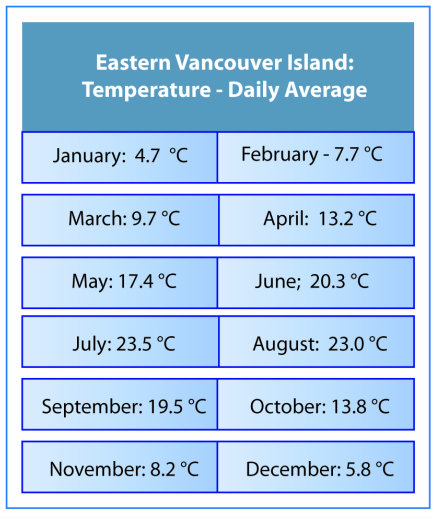Precipitation and Climate
|
Changing Precipitation
Precipitation on the North-East side of the Mt. Arrowsmith range, varies from an annual average of 200 cms in the high elevations, to 95 cms near the coast. Generally the heaviest rainfall occurs during November and December near the coast, while highly variable snow pack amounts occur at higher elevations. Regional climate change is likely to result in lower snow levels in winter, earlier springs, warmer low humidity summers, and later drier falls. |
|




